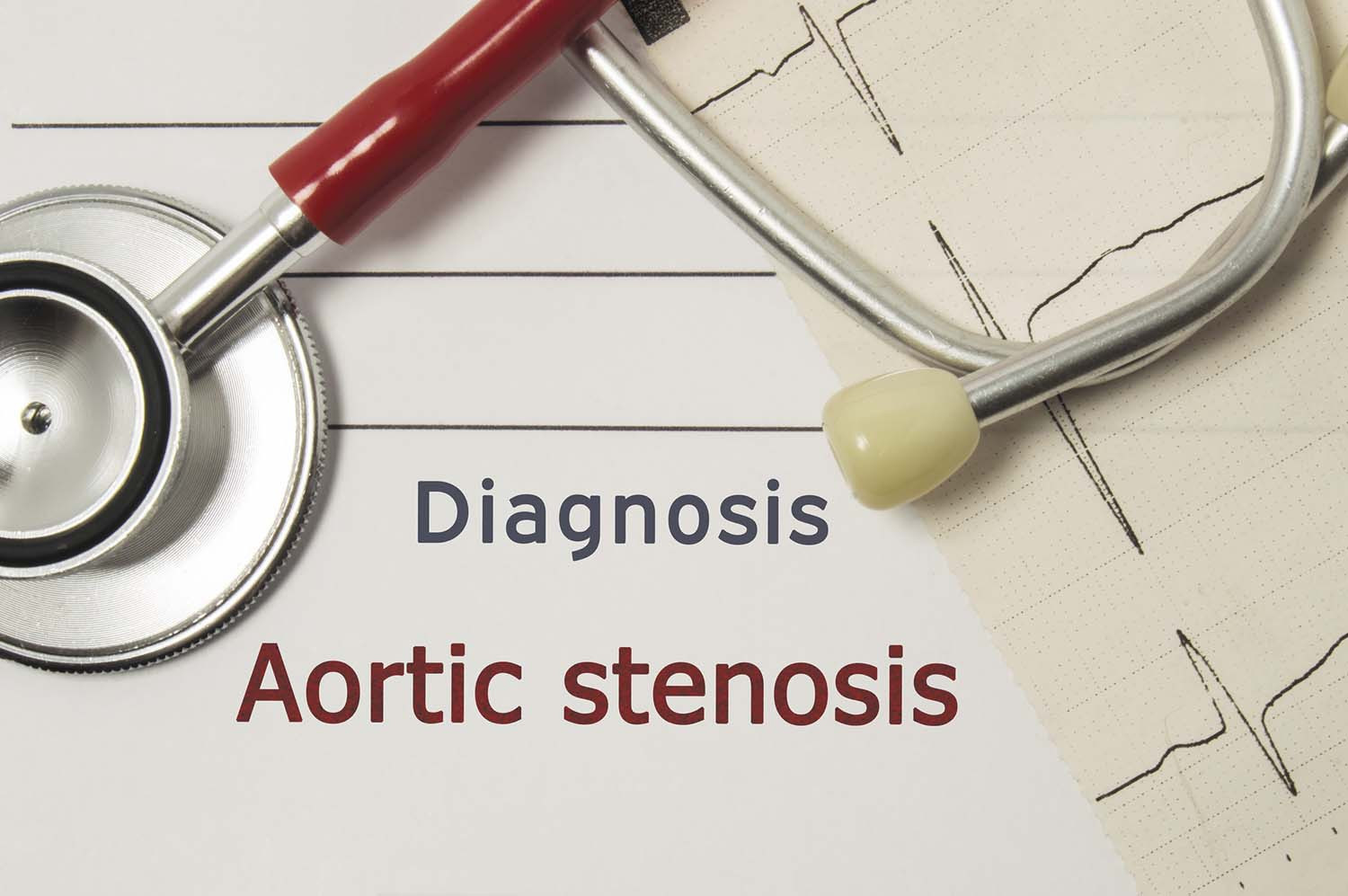An inside look at aortic stenosis
Without proper monitoring and treatment, this valve problem can lead to heart failure.
- Reviewed by Howard E. LeWine, MD, Chief Medical Editor, Harvard Health Publishing; Editorial Advisory Board Member, Harvard Health Publishing

A leading heart-related issue for older men is something most are unaware of — aortic stenosis.
"Aortic stenosis occurs when the heart's aortic valve opening narrows, and blood cannot flow normally," says Dr. Patrick O'Gara, Harvard Medical School Professor of Medicine and senior physician in the cardiovascular division at Brigham and Women's Hospital.
Know the symptoms
The aortic valve sits between the left ventricle (the heart's main pumping chamber) and the aorta (the body's major artery). The valve keeps blood from flowing back into the left ventricle after a heart contraction pushes blood into the aorta.
When aortic stenosis occurs, the aortic valve becomes calcified, stiff, and narrow, which impedes the usual smooth blood flow out of the heart and into the aorta. This impairment can cause symptoms, such as shortness of breath, chest tightness, fatigue, lightheadedness, and fainting.
"The symptoms tend to come on gradually, so people don't always recognize them," says Dr. O'Gara. "Also, some people unconsciously adapt their behavior to avoid exertion. It's also possible to have aortic stenosis and not experience any symptoms."
Your doctor may first suspect aortic stenosis when he hears a heart murmur, a rumbling or whooshing sound with each contraction of the left ventricle as blood flows across the thickened aortic valve and creates turbulence. The diagnosis can be easily confirmed with a heart ultrasound known as an echocardiogram.
Over time, the symptoms can occur more often and become more severe. Without treatment, aortic stenosis can lead to heart failure, in which the heart cannot pump efficiently enough to meet the body's need for blood, and even death. "If you experience any of these symptoms seek immediate medical care," says Dr. O'Gara.
What are the causes?
A normal aortic valve is made up of three sections, called leaflets. But some people are born with a valve that has only two leaflets, known as a bicuspid aortic valve. The slightly abnormal flow through bicuspid aortic valves puts extra stress on the leaflets. This usually doesn't pose a problem in childhood. However, over time this causes changes in the two leaflets that result in a hard calcified valve.
The specific reason why some people with normal appearing tricuspid valves become stiff and calcified leading to aortic stenosis is not known. Age is the most significant risk factor. The prevalence of the condition rises from about 1.3% from ages 60 to 69 to about 10% by age 80. Hypertension, diabetes, and high cholesterol also are common in people with aortic stenosis. Specific health problems are also associated with a higher risk, such as chronic kidney disease, smoking, an overactive parathyroid gland, and some inflammatory disorders such as rheumatoid arthritis.
The calcium buildup on the aortic valve is not connected to the amount of calcium you consume. Rather, the calcium is a late stage manifestation of disordered metabolism and inflammation within the valve leaflets.
Treatment options
Once aortic stenosis is confirmed, there's no way to prevent its progression. "The goal is to monitor it until it becomes severe enough to require surgical valve replacement," says Dr. O'Gara.
Doctors often recommend a repeat echocardiogram for mild aortic stenosis every three to five years. Moderate cases should be checked every one to two years, and patients with severe aortic stenosis should have an echocardiogram every six to 12 months. "It's possible to live many years with no changes in your condition," says Dr. O'Gara.
Most people, including those with bicuspid valves and those younger than age 65, have open heart surgery to replace the valve with a mechanical or tissue valve. Mechanical valves are more durable but require life-long treatment with warfarin (Coumadin). Tissue (biological) valves have a finite shelf life and wear out quicker in patients younger than age 65 compared with older ones. About 10% to 20% of people will experience valve failure and require a second procedure.
A less invasive approach called transcatheter aortic valve implantation (TAVI) is an option for people over age 65, especially when there are other health reasons not to consider surgery.
With TAVI, a thin tube called a catheter carries the replacement valve to the heart. The catheter is inserted into an artery in the groin and gently maneuvered through the blood vessels into the opening between the heart and the aorta. Once in place, the device expands and anchors the new valve inside the old one.
"The vast majority of people feel better and live longer after having surgery or TAVI," says Dr. O'Gara. "They can enjoy an improved quality of life."
Image: © Shidlovski/Getty Images
About the Author

Matthew Solan, Executive Editor, Harvard Men's Health Watch
About the Reviewer

Howard E. LeWine, MD, Chief Medical Editor, Harvard Health Publishing; Editorial Advisory Board Member, Harvard Health Publishing
Disclaimer:
As a service to our readers, Harvard Health Publishing provides access to our library of archived content. Please note the date of last review or update on all articles.
No content on this site, regardless of date, should ever be used as a substitute for direct medical advice from your doctor or other qualified clinician.
















